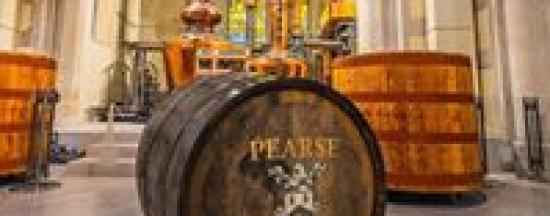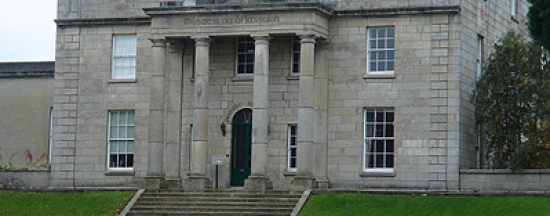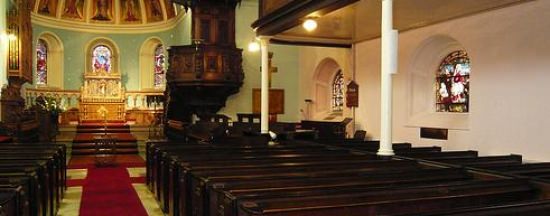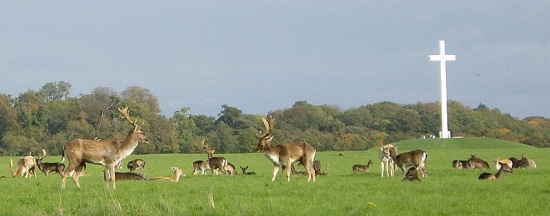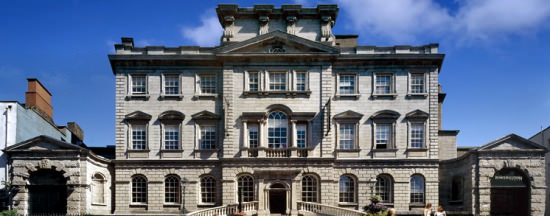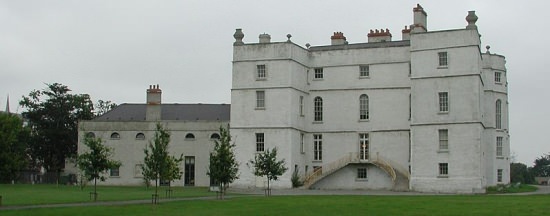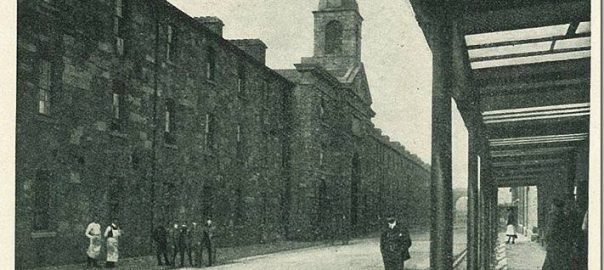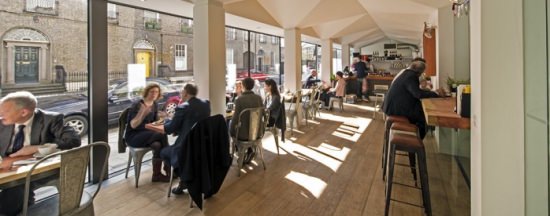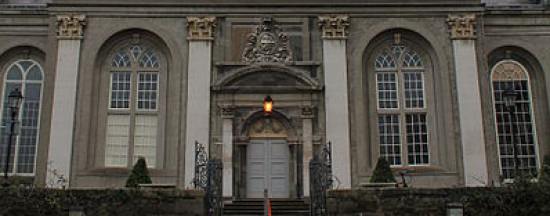Situated in Dublin’s historic Liberties, the Pearse Lyons Distillery is a boutique distillery located only five minutes away from the Guinness Storehouse. Nestled in the former Church of St. James, the distillery has a colourful history dating back to the 12th Century.
Via the tour of the distillery and surrounding graveyard, guests are introduced to compelling characters from Dublin’s famous distilling and brewing district. This district, rich in culture and tradition, was once a place of booming industry known as The Golden Triangle.
The Pearse Lyons Distillery produces some of Ireland’s finest small batch Irish whiskies and celebrates the Irish tradition of storytelling on each guided tour. Guests enjoy a sensory experience as they are brought through the distilling process, before enjoying whiskey and gin tastings at our tasting bar. The tour options include a guided tour and tasting experience, an art of distilling experience with the head distiller and a whiskey and food pairing experience, with local seasonal produce.
All booklets, interactive material and welcome videos are translated in seven languages (English, French, German, Spanish, Italian, Chinese and Portuguese).
The distillery tours run every hour on the hour and are small in size so that you can enjoy a more personal experience.
St. James’s Church dates back to the 12th century. The church was constructed in 1859 in a Gothic design with a cross shape, a tower and a spire at the southwest corner. It was closed for worship following a decline in the number of parishioners in 1963. It underwent various transformations, including becoming a lighting store and a food warehouse, until finally being renovated as you see it today.
Most of the original glass windows at St. James’ Church were either damaged or removed. The new owners have given fresh life to the old window frames, creating stories associated with the art of the cooper, Irish whiskey and St. James. The illustrations include the pilgrimage to the Camino de Santiago; how Irish whiskey is made; the art of coopering; and the natural ingredients used in making “uisce beatha” (Irish for whiskey).
Irish whiskey has a long and interesting history. While the exact origins are not known, ancient manuscripts reveal Irish monks practised the art of distillation during the 6th Century. In the early days, the monasteries where the monks resided were at the centre of life and industry in Ireland and they prospered between the 6th and 9th centuries. However, from the 9th to 11th centuries, the Vikings invaded Ireland and destroyed the monasteries, forcing the monks to flee to Scotland where they created new settlements, bringing with them the art of distillation, thus beginning the production of Scotch whisky.
The next phase of importance arose during the 12th Century when the Normans invaded Ireland. It is said that the Norman soldiers appreciated the taste of Irish whiskey but they found the pronunciation of the word “Uisce Beatha” tricky and so renamed it, first “fuisce” and then “whiskey”.
The popularity of Irish whiskey grew so much so that by the 17th Century it was the drink of choice for Queen Elizabeth I of England. At the same time, commercial development began to occur as the government granted licences to a number of distilleries for the purpose of distilling whiskey. The first licence was granted in 1608 to Sir Thomas Phillips at the Old Bushmills Distillery (in the north-east of Ireland). This distillery is still in existence today and is the oldest working distillery in the world.
By the late 18th Century, distilleries flourished and some of the finest Irish whiskeys were exported throughout the British Empire. Similarly, from 1740 to 1910, Irish emigrants to the United States brought the taste of Irish whiskey to America. By the beginning of the 20th century, Irish whiskey accounted for 90% of the global export market. However, after establishing itself as the dominant world whiskey, two cruel blows were about to be dealt to the industry.
During 1916, as the First World War raged throughout Europe, the Irish rebelled against their British rulers. The treaty with Britain which followed the rebellion led to a civil war in Ireland from 1919 to 1921. The ending of civil war was then followed by a prolonged economic war with Britain which severely limited the volume of whiskey Ireland could export.
At the same time, the United States introduced the Prohibition laws which outlawed the production, importation or trade in alcoholic beverages. With difficulties in Ireland’s two most important export markets, many distilleries here closed their doors. When Prohibition ended in 1943, Ireland did not have a sufficient supply of mature Irish whiskey to cater for American demand. The dominant market position which Irish whiskey enjoyed prior to Prohibition was lost to the Scottish distillers and by the early 1960’s the export of Irish whiskey was virtually non-existent.
Coopers, often referred to as artisans of wood, are professional craftsmen who create barrels or casks for whiskey and various other alcoholic beverages, such as sherry, bourbon and wine. It is estimated that 6,000 coopers once worked this trade in Ireland, building and repairing wooden barrels for the once-thriving whiskey and beer industries that are now enjoying a renaissance.
Coopers have worked in the Liberties (part of Dublin’s inner city) for hundreds of years. They were the original packaging experts for dry and wet goods. The breweries and distilleries in the area employed them to mature and transport their goods. Pearse Lyons’ ancestors on his mother’s side, the Dunnes, were skilled in this craft for generations. One family member, Margaret Dunne, is recorded as the first female cooper in Ireland.
Irish whiskeys and other craft beverages are aged in wooden barrels. Storing the liquid in barrels allows the wood to impart its rich, nutty, spicy flavours and aromas. This process further enhances the drinkability of the liquid contained within. Due to the global rise in demand for Irish whiskey, the need for coopers and their finished products is stronger than ever.
Irish whiskey matures from anywhere between three years and a day to over 40 years. The barrels expand and contract with age and according to the temperature of the warehouse in which they rest. It is in reaction to this maturation process that the coopers play their most vital role. As the wood ages and the spirit within matures, cracks or other changes can appear in the wood. The coopers repair, maintain and protect the casks as they age.
Pearse Lyons Distillery
Opening Hours:
Open 7 days: Mon – Sat 10.30am – 6.00pm, Sun 11:30am – 6:00pm
The distillery tours run every hour on the hour between 12pm and 5pm.
Tour capacity is small for a more personal experience, online booking recommended. Private tours and experiences also available.
Closed Dec 24 – 27
Contact & Pricing:
pearselyonsdistillery.com
[email protected]
Tel: 01 691 6000
121-122 James’s Street, Dublin 8
Adults from €22; concessions
